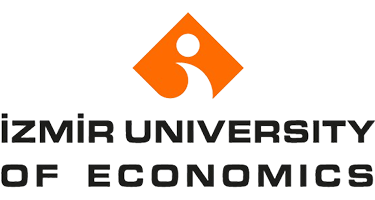Department of Electric (Turkish)
ELKT 207 | Course Introduction and Application Information
| Course Name |
Power Electronics
|
|
Code
|
Semester
|
Theory
(hour/week) |
Application/Lab
(hour/week) |
Local Credits
|
ECTS
|
|
ELKT 207
|
Fall
|
1
|
2
|
2
|
4
|
| Prerequisites |
None
|
|||||
| Course Language |
Turkish
|
|||||
| Course Type |
Required
|
|||||
| Course Level |
Short Cycle
|
|||||
| Mode of Delivery | - | |||||
| Teaching Methods and Techniques of the Course | - | |||||
| National Occupation Classification | - | |||||
| Course Coordinator | - | |||||
| Course Lecturer(s) | ||||||
| Assistant(s) | - | |||||
| Course Objectives | The aim of this course is for students to learn semiconducting power electronics components, to comprehend logic of electrical power conversion and the structures of circuits. |
| Learning Outcomes |
The students who succeeded in this course;
|
| Course Description | Fundamental power electronics circuits. Structures and usage of diode, tristor, triac, GTO, Darlington BJT, Mosfet, IGBT. AC-AC, AC-DC, DC-AC converters. |
| Related Sustainable Development Goals |
|
|
|
Core Courses |
X
|
| Major Area Courses | ||
| Supportive Courses | ||
| Media and Management Skills Courses | ||
| Transferable Skill Courses |
WEEKLY SUBJECTS AND RELATED PREPARATION STUDIES
| Week | Subjects | Related Preparation |
| 1 | Definition and scope of power electronics | |
| 2 | Fundamental power circuits and logic of power conversion | |
| 3 | Fundamental power components, structures, operation and usage of diode, tristor, triac, GTO | |
| 4 | Fundamental power components, structures, operation and usage of Darlington BJT, EMosfet, IGBT | |
| 5 | Structures, operation and usage of UJT, PUT and diac | |
| 6 | Pulse generating circuits | |
| 7 | Structure and usage of PWM square wave generators | |
| 8 | Midterm | |
| 9 | Structure and usage of pulse and PWM driver circuits | |
| 10 | 1F AC-DC converter circuits | |
| 11 | 3F AC-DC converter circuits | |
| 12 | AC-AC converter circuits | |
| 13 | DC-DC converter circuits | |
| 14 | DC-AC converter circuits | |
| 15 | Evaluation of semester | |
| 16 | Final |
| Course Notes/Textbooks | |
| Suggested Readings/Materials |
EVALUATION SYSTEM
| Semester Activities | Number | Weigthing |
| Participation |
1
|
10
|
| Laboratory / Application | ||
| Field Work | ||
| Quizzes / Studio Critiques | ||
| Portfolio | ||
| Homework / Assignments | ||
| Presentation / Jury | ||
| Project | ||
| Seminar / Workshop | ||
| Oral Exams | ||
| Midterm |
1
|
40
|
| Final Exam |
1
|
50
|
| Total |
| Weighting of Semester Activities on the Final Grade |
2
|
50
|
| Weighting of End-of-Semester Activities on the Final Grade |
1
|
50
|
| Total |
ECTS / WORKLOAD TABLE
| Semester Activities | Number | Duration (Hours) | Workload |
|---|---|---|---|
| Theoretical Course Hours (Including exam week: 16 x total hours) |
16
|
1
|
16
|
| Laboratory / Application Hours (Including exam week: '.16.' x total hours) |
16
|
2
|
32
|
| Study Hours Out of Class |
16
|
3
|
48
|
| Field Work |
0
|
||
| Quizzes / Studio Critiques |
0
|
||
| Portfolio |
0
|
||
| Homework / Assignments |
0
|
||
| Presentation / Jury |
0
|
||
| Project |
0
|
||
| Seminar / Workshop |
0
|
||
| Oral Exam |
0
|
||
| Midterms |
1
|
2
|
2
|
| Final Exam |
1
|
2
|
2
|
| Total |
100
|
COURSE LEARNING OUTCOMES AND PROGRAM QUALIFICATIONS RELATIONSHIP
|
#
|
Program Competencies/Outcomes |
* Contribution Level
|
|||||
|
1
|
2
|
3
|
4
|
5
|
|||
| 1 | To have mathematical knowledge to make analyses on their professions |
-
|
-
|
-
|
-
|
-
|
|
| 2 | To have basic foreign language knowledge. |
-
|
-
|
-
|
-
|
-
|
|
| 3 | To have knowledge on the computer operatşng systems, basic office softwares and general computer hardware |
-
|
-
|
-
|
-
|
-
|
|
| 4 | To have knowledge on fundemental physical laws and fundamental electrical circuit analyses. |
-
|
-
|
-
|
-
|
-
|
|
| 5 | To have knowledge on low voltage system and its components |
-
|
-
|
-
|
-
|
-
|
|
| 6 | To have knowledge on the structure and working principles of analog and digital electrical measurement devices and to be able to use these devices |
-
|
-
|
-
|
-
|
-
|
|
| 7 | To know the AC and DC circuit components and to make circuit analyses |
-
|
-
|
-
|
-
|
-
|
|
| 8 | To have knowledge on the structure of electrical machines, working principles, coil types and connections to the circuit. |
-
|
-
|
-
|
-
|
-
|
|
| 9 | To have knowledge on low current, high current, lightning, fire and safety systems, to draw electrical installment plans, to understand and make commitment and exploration works of electrical installation. |
-
|
-
|
-
|
-
|
-
|
|
| 10 | To plan electrical and electronical circuits with drawing and simulation programs |
-
|
-
|
-
|
-
|
-
|
|
| 11 | The ability of maintenance, repair and installation of electrical device and systems |
-
|
-
|
-
|
-
|
-
|
|
| 13 | The knowledge of fundamental concept and components of automatical control systems. |
-
|
-
|
-
|
-
|
-
|
|
| 14 | The recognization of components used on the transmission and distribution lines while having the knowledge of the production of electrical energy. |
-
|
-
|
-
|
-
|
-
|
|
| 15 | The knowledge of the structure and working of the fundamental electronic components. The knowledge of the power electronics components and their usage properties. The knowledge of fundamentals of logic circuit and the ability of the design of the digital circuit |
-
|
-
|
-
|
-
|
X
|
|
*1 Lowest, 2 Low, 3 Average, 4 High, 5 Highest

IZMIR UNIVERSITY OF ECONOMICS GÜZELBAHÇE CAMPUS
DetailsGLOBAL CAREER
As Izmir University of Economics transforms into a world-class university, it also raises successful young people with global competence.
More..CONTRIBUTION TO SCIENCE
Izmir University of Economics produces qualified knowledge and competent technologies.
More..VALUING PEOPLE
Izmir University of Economics sees producing social benefit as its reason for existence.
More..
You are one step ahead with your graduate education at Izmir University of Economics.


